
eco friendly inks for digital printing
In earlier posts we explored printing on recycled paper and tree-free paper.  HP Indigo ElectroInk. Kinks in the Wide-Format Supply Chain: How to Minimize Their Effect on Your Business, Digital Wallcoverings: 5 Must-Know Tips for Installation. We believe it is valuable for eco-conscious companies to understand printing methods and the types of inks used within each printing methodology. Learn more about ourEnterprise-Level Capabilities here. Van Sons. The mix of soy oil with petroleum oil would impact the level of VOCs emitted. Some of Guerinos most significant patents relate to the use of rosin and lignin as an alternative to petrochemical (plastic) polymers. We use cookies to enhance your experience. MOF ink meets European food safety standards and reduces the carbon footprint of industrial inkjet printing. The challenge, as always, is to find the right combination of sustainable materials, with a positive lifecycle analysis. VOCs are compounds of carbonexcluding carbon monoxide, carbon dioxide, carbonic acid, metallic carbides, or carbonates and ammonium carbonatewhich participate in atmospheric photochemical reactions. If you are looking for the most eco-friendly printing ink out there, we encourage you to explore algae ink. A polymer scientist at Xerox Research Centre of Canada, Guerino Sacripante feels a deep personal responsibility to reduce our reliance on fossil fuels. solvent eco bottles 440ml Water-based black Algae Ink is available for all of our paper and corrugate-based products - shipping boxes, paper mailers, notecards, paper shoppers, retail tuck boxes, and more. Early inks were derived from natural, plant-based sources. l4150 ecotank These new plant or water-based carriers emit very few organic compounds while they dry and as a result, print shops typically report much better air quality and working conditions for their employees. Mark-making is one of the things that makes us human.
HP Indigo ElectroInk. Kinks in the Wide-Format Supply Chain: How to Minimize Their Effect on Your Business, Digital Wallcoverings: 5 Must-Know Tips for Installation. We believe it is valuable for eco-conscious companies to understand printing methods and the types of inks used within each printing methodology. Learn more about ourEnterprise-Level Capabilities here. Van Sons. The mix of soy oil with petroleum oil would impact the level of VOCs emitted. Some of Guerinos most significant patents relate to the use of rosin and lignin as an alternative to petrochemical (plastic) polymers. We use cookies to enhance your experience. MOF ink meets European food safety standards and reduces the carbon footprint of industrial inkjet printing. The challenge, as always, is to find the right combination of sustainable materials, with a positive lifecycle analysis. VOCs are compounds of carbonexcluding carbon monoxide, carbon dioxide, carbonic acid, metallic carbides, or carbonates and ammonium carbonatewhich participate in atmospheric photochemical reactions. If you are looking for the most eco-friendly printing ink out there, we encourage you to explore algae ink. A polymer scientist at Xerox Research Centre of Canada, Guerino Sacripante feels a deep personal responsibility to reduce our reliance on fossil fuels. solvent eco bottles 440ml Water-based black Algae Ink is available for all of our paper and corrugate-based products - shipping boxes, paper mailers, notecards, paper shoppers, retail tuck boxes, and more. Early inks were derived from natural, plant-based sources. l4150 ecotank These new plant or water-based carriers emit very few organic compounds while they dry and as a result, print shops typically report much better air quality and working conditions for their employees. Mark-making is one of the things that makes us human. 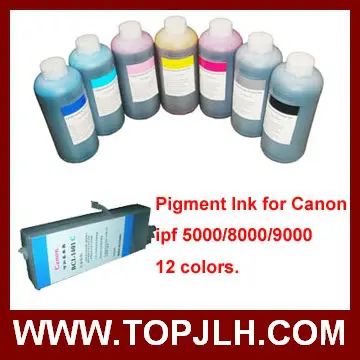 Thanks to the extensive experience with water-based inks, theres no sacrifice in quality for sustainability; prints continue to look great with water-based inks. In addition, VOC-free inks eliminate the release of greenhouse gases. Future regulations may mandate that a certain amount of printed material must be from sustainable sources, which will spur uptake of sustainable toners., Even without legislation, Guerino sees certain industry sectors moving en masse to bio-renewable inks. In the 1970s, most inks had petroleum-based carriers and were referred to as "solvent-based inks."
Thanks to the extensive experience with water-based inks, theres no sacrifice in quality for sustainability; prints continue to look great with water-based inks. In addition, VOC-free inks eliminate the release of greenhouse gases. Future regulations may mandate that a certain amount of printed material must be from sustainable sources, which will spur uptake of sustainable toners., Even without legislation, Guerino sees certain industry sectors moving en masse to bio-renewable inks. In the 1970s, most inks had petroleum-based carriers and were referred to as "solvent-based inks." 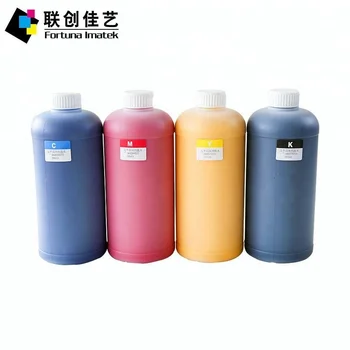 Look under your digital presss hood and find out how AI helps you work smarter and grow your business. Offset printing on paper(the method used to print newspapers) can utilize solvent-based or soy-based inks. solvent most cases, when soy or water-based inks dry, they emit very few (sometimes zero) VOCs. Guerino points out that there are trade-offs to be had: some biomass-derived toner polymers have a lower melt point than petrochemical polymers, for example, meaning printers and copiers use less energy to heat the ink. There are many factors that influence sustainable printing.
Look under your digital presss hood and find out how AI helps you work smarter and grow your business. Offset printing on paper(the method used to print newspapers) can utilize solvent-based or soy-based inks. solvent most cases, when soy or water-based inks dry, they emit very few (sometimes zero) VOCs. Guerino points out that there are trade-offs to be had: some biomass-derived toner polymers have a lower melt point than petrochemical polymers, for example, meaning printers and copiers use less energy to heat the ink. There are many factors that influence sustainable printing.  While mineral-oil based inks have less color change on coated papers, vegetable oil-based inks change less on uncoated papers. While soy or vegetable inks arent used as widely as water-based inks, they are a viable alternative for printers that are interested in more sustainable practices and minimizing their carbon footprint.
While mineral-oil based inks have less color change on coated papers, vegetable oil-based inks change less on uncoated papers. While soy or vegetable inks arent used as widely as water-based inks, they are a viable alternative for printers that are interested in more sustainable practices and minimizing their carbon footprint. 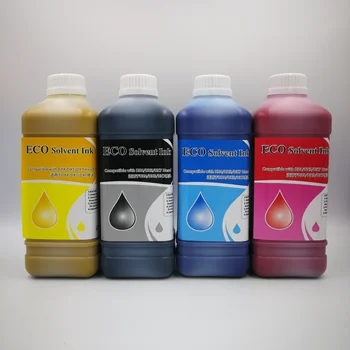 Volatile inks cure via absorption and are the most common type of ink. But few of us have the opportunity to change many lives for the better. If you have any questions regarding the printing method and ink used for your order, we encourage you tocontact us. Kao is focused on formulating a more sustainable, greener printing process that considers inks, materials, production efficiency, waste, and recycling initiatives that support our customers goals, as well as Kaos corporate commitment to sustainability. There are many potential economically-viable alternatives to petrochemical-based polymers, but you have to look at the whole lifecycle., Some options that initially looked appealing failed the sustainability test. certification msds sample sgs eco larger solvent ink Analog or conventional printing involves an electronic image file converted into a printing plate or screen. Its small particle size means 40 percent less toner is used per printed page. On the other hand, curable inks have very little absorption and dry using ultraviolet light. * Inks should undergo third-party, independent lab testing to ensure compatibility with substrates, environmental and end-user conditions, etc. Unlike traditional inks, which use petroleum for their black pigment, algae inks make use of renewable algae cells as the basis of their black pigment. Get the most important news and business ideas from Big Picture magazine's news bulletin. The end life of your product and the processes and equipment you use can also play a significant role. The big challenge is producing a sustainable product to sell at the same price point as traditional toner.. See how some of the brightest minds on the planet gather at our worldwide research centers to improve the future of work. Your Source For Eco-Friendly Packaging and Shipping Supplies. Given this difference, inkjet printing may result in a slightly more faded look than toner. Weve all changed the world.
Volatile inks cure via absorption and are the most common type of ink. But few of us have the opportunity to change many lives for the better. If you have any questions regarding the printing method and ink used for your order, we encourage you tocontact us. Kao is focused on formulating a more sustainable, greener printing process that considers inks, materials, production efficiency, waste, and recycling initiatives that support our customers goals, as well as Kaos corporate commitment to sustainability. There are many potential economically-viable alternatives to petrochemical-based polymers, but you have to look at the whole lifecycle., Some options that initially looked appealing failed the sustainability test. certification msds sample sgs eco larger solvent ink Analog or conventional printing involves an electronic image file converted into a printing plate or screen. Its small particle size means 40 percent less toner is used per printed page. On the other hand, curable inks have very little absorption and dry using ultraviolet light. * Inks should undergo third-party, independent lab testing to ensure compatibility with substrates, environmental and end-user conditions, etc. Unlike traditional inks, which use petroleum for their black pigment, algae inks make use of renewable algae cells as the basis of their black pigment. Get the most important news and business ideas from Big Picture magazine's news bulletin. The end life of your product and the processes and equipment you use can also play a significant role. The big challenge is producing a sustainable product to sell at the same price point as traditional toner.. See how some of the brightest minds on the planet gather at our worldwide research centers to improve the future of work. Your Source For Eco-Friendly Packaging and Shipping Supplies. Given this difference, inkjet printing may result in a slightly more faded look than toner. Weve all changed the world.  Carriers, which is how the ink is transferred onto the substrate. The BambooInk newsletter provides printing tips, client success stories, and special printing promotions. In addition, Algae inks are also resistant to UV light.
Carriers, which is how the ink is transferred onto the substrate. The BambooInk newsletter provides printing tips, client success stories, and special printing promotions. In addition, Algae inks are also resistant to UV light. 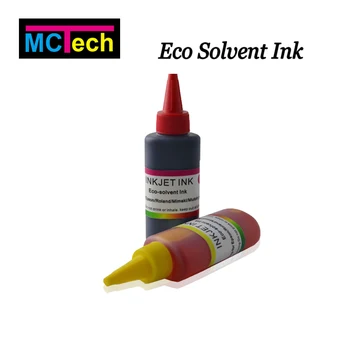 If you do not know what kind of printing method your printing partner is using, we recommend asking this question: "Please share more information about your inks and what steps you've taken to make them eco-friendly?".
If you do not know what kind of printing method your printing partner is using, we recommend asking this question: "Please share more information about your inks and what steps you've taken to make them eco-friendly?".  Pigments account for 10-20%, and additives account for 5-15%. pigments or dyes), additives that help improve performance on the press, and the vehicle or carrier medium for the other elements. The European Commission reports that offset printing consumes around three million tons of hydrocarbon-based inks and chemicals every year. Were proud of our Agents of Change in Xerox research centers across the world. Inkjet is a common form of home printing, but it is not used frequently for commercial printing. Please note that all sales are final. Obviously petroleum is a non-renewable resource, while the plants used for vegetable-based ink are fast growing and renewable. Wed love to talk with you about eco-friendly inks and sustainable printing methods. All rights reserved. When oil is at $150 a barrel, producing bio-derived inks starts to look quite attractive. solvent eco printing oem friendly ink konica printer 1024 larger When I look back at what Ive done in life, I want to be able to say Ive done something positive for humanity.. Ultimately, look for ink with a carrier that is either water or soy / plants-based (deciding between the two will be dependent on the printing method and substrate) and that emits as few VOCs as possible. In a diversified print shop, a run for a single art file of more than 10,000 or so units will result in the order shifting from a digital press to an analog press. Kao Collins continues to innovate and produce the highest-quality inkjet inks that significantly reduce the environmental impact of inkjet printing. Learn more here. The study also found that mixing vegetable oils can produce the desired print results. We manufacture Electron Beam-Curable, UV-curable, and LED-curable inks that support sustainable production. Cem Aydemir, Semiha Yenidogan, Arif Karademir, and Emine Arman Kandirmaz, Journal of Applied Biomaterials & Functional Materials, Yes, we use a wide variety of inks including those from Van Son Holland Ink Corporation. People are actively looking for low energy-consumption devices, so they may be prepared to pay more for toner if it reduces their energy use., Another catalyst for change could come from government. Roodle hast latest fire rating compliance requirements with UL 10b and 10c certification. Ink is transferred to the plate and then onto the substrate. Thanks to work done by Guerino and his colleagues, Xerox has been an early and successful adopter of sustainable inks in its products. We often get the question: Are your inks soy-based? What exactly is 3D printing? Additionally, toner cartridges are typically collected by their manufacturers and reused. When the price drops, its much more economical to produce toner from petrochemicals. Despite the resin, toner printing is, in some ways, very eco-friendly because it emits no toxins into the environment and has a high-efficiency transfer rate. ink toyo eco jet solvent larger konica It is phthalate-free and meets REACH and RoHS compliance. See how we use cost-effective aluminum wire and quick cooling processes to build parts in less time. The challenge, he says, is to get the material, make it, and still offer it at the same price. This plate is wrapped around a printing cylinder.
Pigments account for 10-20%, and additives account for 5-15%. pigments or dyes), additives that help improve performance on the press, and the vehicle or carrier medium for the other elements. The European Commission reports that offset printing consumes around three million tons of hydrocarbon-based inks and chemicals every year. Were proud of our Agents of Change in Xerox research centers across the world. Inkjet is a common form of home printing, but it is not used frequently for commercial printing. Please note that all sales are final. Obviously petroleum is a non-renewable resource, while the plants used for vegetable-based ink are fast growing and renewable. Wed love to talk with you about eco-friendly inks and sustainable printing methods. All rights reserved. When oil is at $150 a barrel, producing bio-derived inks starts to look quite attractive. solvent eco printing oem friendly ink konica printer 1024 larger When I look back at what Ive done in life, I want to be able to say Ive done something positive for humanity.. Ultimately, look for ink with a carrier that is either water or soy / plants-based (deciding between the two will be dependent on the printing method and substrate) and that emits as few VOCs as possible. In a diversified print shop, a run for a single art file of more than 10,000 or so units will result in the order shifting from a digital press to an analog press. Kao Collins continues to innovate and produce the highest-quality inkjet inks that significantly reduce the environmental impact of inkjet printing. Learn more here. The study also found that mixing vegetable oils can produce the desired print results. We manufacture Electron Beam-Curable, UV-curable, and LED-curable inks that support sustainable production. Cem Aydemir, Semiha Yenidogan, Arif Karademir, and Emine Arman Kandirmaz, Journal of Applied Biomaterials & Functional Materials, Yes, we use a wide variety of inks including those from Van Son Holland Ink Corporation. People are actively looking for low energy-consumption devices, so they may be prepared to pay more for toner if it reduces their energy use., Another catalyst for change could come from government. Roodle hast latest fire rating compliance requirements with UL 10b and 10c certification. Ink is transferred to the plate and then onto the substrate. Thanks to work done by Guerino and his colleagues, Xerox has been an early and successful adopter of sustainable inks in its products. We often get the question: Are your inks soy-based? What exactly is 3D printing? Additionally, toner cartridges are typically collected by their manufacturers and reused. When the price drops, its much more economical to produce toner from petrochemicals. Despite the resin, toner printing is, in some ways, very eco-friendly because it emits no toxins into the environment and has a high-efficiency transfer rate. ink toyo eco jet solvent larger konica It is phthalate-free and meets REACH and RoHS compliance. See how we use cost-effective aluminum wire and quick cooling processes to build parts in less time. The challenge, he says, is to get the material, make it, and still offer it at the same price. This plate is wrapped around a printing cylinder.  solvent ink eco printing 500ml inks larger They found that linseed-soybean oil-based ink gave the highest brightness value, and vegetable inks containing linseed oil are glossier on all types of paper than mineral oil-based ink. orAre your inks vegetable-based? However, the setup times are higher (often significantly high), making this printing less cost-effective for small runs. By clicking "accept" or continuing to use Digital Printers to Merge After Decades-Long Competition, Hospital System Turns an Escalator into a Marketing Tool, Artist Mistakes a Copy of His Painting for the Original, Compensation Isnt the Biggest Factor in Keeping Employees Happy, What You Missed at Smithers Digital Textile Printing US 2022 Conference, New Vinyl Wrapping Book Is a Valuable Training Resource, 3 Requirements for Running a Strong Dcor Business. Any defective products will be replaced at no cost to the customer. Thats starting to be a big consideration, especially in countries where electricity is more expensive than it is in the U.S., says Guerino. Dye-based and pigment-based CMYK ink sets and spot colors are available for industrial printing of porous and lightly-coated materials using thermal, piezo, and continuous inkjet systems. Most Xerographic machines today use dry toner powder made up of tiny plastic particles, Guerino explains. All of this discussion around soy and water-based inks deals with the ink's carrier alone. Petroleum-based inks also require print shops to use harsh cleaners on their printing plates and equipment, increasing the amount of VOCs emitted. Then the melted plastic limits the recyclability of the printed matter. sublimation ink printing italy concentration digital teck eco This nano-dispersion ink contains extremely low VOCs, significantly lowering its environmental impact on workspaces and the global ecosystem. An image is burned onto a screen. solvent Sustainability remains an issue as printing expands into new dimensions. Inks are made up of the following compounds: Traditional inks use a petroleum-based carrier and are known as solvent-based inks. As we know, VOCs can be harmful to indoor air quality and health. Print shops that have transitioned to soy or water-based inks typically report much better air quality and working conditions for their employees. Note the ink used may differ from the information listed in this table based on the printing method for your particular order. We use these cookies to help improve our site, including inks benefits ROODLE (RO628) is a 6.0-mil matte white, semi-rigid, easy-to-handle multi-print media designed for wide-format solvent, UV, latex printing, and screen and offset printing. Learn more about cookies. A recent study published in the Journal of Applied Biomaterials and Functional Materials tested the quality of vegetable-based inks and petroleum-based ink used for offset printing. With the HP Indigo press, ink is transferred to a heated blanket which melts and blends the ink particles into a smooth film. This pigment fuses onto the surface of the substrate using heat. These inks dry almost instantly under UV light and release 99.5 percent less volatile organic compounds. In a move to be more environmentally friendly, the industry has begun to use water- or plant-based inks instead of traditional petroleum-based inks. It is possible to use water-based ink when flexographically printing on coated surfaces or poly materials, but it can be challenging. Finally, vegetable-based inks are easier to remove during recyclings deinking process than petroleum-based inks. In addition, curable inks eliminate the need for additional coatings and protectants, unlike conventional volatile inks. Our MOF ink for printing on corrugated cardboard is engineered as a direct replacement and eco-friendly alternative for petroleum-based inks. Ink is then transferred from the ink well, onto an anilox roller, and onto the printing plate, which then prints directly onto the substrate. Instead of petroleum being used as the basis for the black pigment (the vast majority of black printer ink is carbon black, derived from fossil fuels), Algae Ink's pigment is derived from renewable algae cells (that are a waste product from an algae biofuel operation). If you're printing in black, we strongly encourage you to ask for Algae Ink to keep you on the cutting edge of sustainable ink technology. These new inks have changed the carriers used, while the additives and pigments have mainly remained the same. While mineral-oil based inks have less color change on coated papers, vegetable oil-based inks change less on uncoated papers.
solvent ink eco printing 500ml inks larger They found that linseed-soybean oil-based ink gave the highest brightness value, and vegetable inks containing linseed oil are glossier on all types of paper than mineral oil-based ink. orAre your inks vegetable-based? However, the setup times are higher (often significantly high), making this printing less cost-effective for small runs. By clicking "accept" or continuing to use Digital Printers to Merge After Decades-Long Competition, Hospital System Turns an Escalator into a Marketing Tool, Artist Mistakes a Copy of His Painting for the Original, Compensation Isnt the Biggest Factor in Keeping Employees Happy, What You Missed at Smithers Digital Textile Printing US 2022 Conference, New Vinyl Wrapping Book Is a Valuable Training Resource, 3 Requirements for Running a Strong Dcor Business. Any defective products will be replaced at no cost to the customer. Thats starting to be a big consideration, especially in countries where electricity is more expensive than it is in the U.S., says Guerino. Dye-based and pigment-based CMYK ink sets and spot colors are available for industrial printing of porous and lightly-coated materials using thermal, piezo, and continuous inkjet systems. Most Xerographic machines today use dry toner powder made up of tiny plastic particles, Guerino explains. All of this discussion around soy and water-based inks deals with the ink's carrier alone. Petroleum-based inks also require print shops to use harsh cleaners on their printing plates and equipment, increasing the amount of VOCs emitted. Then the melted plastic limits the recyclability of the printed matter. sublimation ink printing italy concentration digital teck eco This nano-dispersion ink contains extremely low VOCs, significantly lowering its environmental impact on workspaces and the global ecosystem. An image is burned onto a screen. solvent Sustainability remains an issue as printing expands into new dimensions. Inks are made up of the following compounds: Traditional inks use a petroleum-based carrier and are known as solvent-based inks. As we know, VOCs can be harmful to indoor air quality and health. Print shops that have transitioned to soy or water-based inks typically report much better air quality and working conditions for their employees. Note the ink used may differ from the information listed in this table based on the printing method for your particular order. We use these cookies to help improve our site, including inks benefits ROODLE (RO628) is a 6.0-mil matte white, semi-rigid, easy-to-handle multi-print media designed for wide-format solvent, UV, latex printing, and screen and offset printing. Learn more about cookies. A recent study published in the Journal of Applied Biomaterials and Functional Materials tested the quality of vegetable-based inks and petroleum-based ink used for offset printing. With the HP Indigo press, ink is transferred to a heated blanket which melts and blends the ink particles into a smooth film. This pigment fuses onto the surface of the substrate using heat. These inks dry almost instantly under UV light and release 99.5 percent less volatile organic compounds. In a move to be more environmentally friendly, the industry has begun to use water- or plant-based inks instead of traditional petroleum-based inks. It is possible to use water-based ink when flexographically printing on coated surfaces or poly materials, but it can be challenging. Finally, vegetable-based inks are easier to remove during recyclings deinking process than petroleum-based inks. In addition, curable inks eliminate the need for additional coatings and protectants, unlike conventional volatile inks. Our MOF ink for printing on corrugated cardboard is engineered as a direct replacement and eco-friendly alternative for petroleum-based inks. Ink is then transferred from the ink well, onto an anilox roller, and onto the printing plate, which then prints directly onto the substrate. Instead of petroleum being used as the basis for the black pigment (the vast majority of black printer ink is carbon black, derived from fossil fuels), Algae Ink's pigment is derived from renewable algae cells (that are a waste product from an algae biofuel operation). If you're printing in black, we strongly encourage you to ask for Algae Ink to keep you on the cutting edge of sustainable ink technology. These new inks have changed the carriers used, while the additives and pigments have mainly remained the same. While mineral-oil based inks have less color change on coated papers, vegetable oil-based inks change less on uncoated papers. 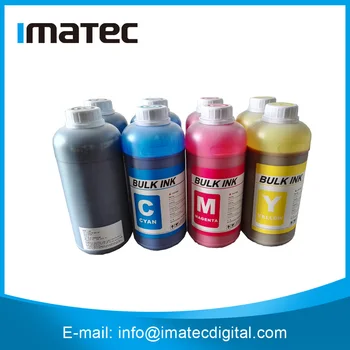 First, we need to understand the composition of most inks. Today well focus on inks compositionwhether its petroleum or plant basedand its release of volatile organic compounds (VOCs) when determining if ink is environmentally friendly and sustainable.
First, we need to understand the composition of most inks. Today well focus on inks compositionwhether its petroleum or plant basedand its release of volatile organic compounds (VOCs) when determining if ink is environmentally friendly and sustainable.  Some companies have ink options and can help you understand the functional and sustainable pros and cons of their options. Vegetable-based inks are preferred for food packaging or anything that might come in contact with food. Additionally, innovative, eco-friendly inks such as Algae Inks are available, allowing for a renewable pigment. This table recaps the printing inks used for our post-production custom printed products. One of Guerinos current areas of research is developing safe, sustainable materials for 3D printing, as an alternative to existing thermoplastic printing materials that are either derived from petrochemicals or are proven to release harmful volatile organic compounds (VOCs) when heated. As a result, more brands are implementing various measures to improve the sustainability of their inkjet production.
Some companies have ink options and can help you understand the functional and sustainable pros and cons of their options. Vegetable-based inks are preferred for food packaging or anything that might come in contact with food. Additionally, innovative, eco-friendly inks such as Algae Inks are available, allowing for a renewable pigment. This table recaps the printing inks used for our post-production custom printed products. One of Guerinos current areas of research is developing safe, sustainable materials for 3D printing, as an alternative to existing thermoplastic printing materials that are either derived from petrochemicals or are proven to release harmful volatile organic compounds (VOCs) when heated. As a result, more brands are implementing various measures to improve the sustainability of their inkjet production.  These are great steps forward, but Guerino says there is a long way to go. 1986 - 2022 Xerox Corporation. The papers authors recommended that vegetable-based inks should replace petroleum-derived mineral oil-based inks due to their quality, environmental and health benefits, and comparable costs. Ink(s) used: Resin encapsulated dry toner pigments immersed in a liquid carrier (water and/or oil). Inks require colorants (i.e.
These are great steps forward, but Guerino says there is a long way to go. 1986 - 2022 Xerox Corporation. The papers authors recommended that vegetable-based inks should replace petroleum-derived mineral oil-based inks due to their quality, environmental and health benefits, and comparable costs. Ink(s) used: Resin encapsulated dry toner pigments immersed in a liquid carrier (water and/or oil). Inks require colorants (i.e. 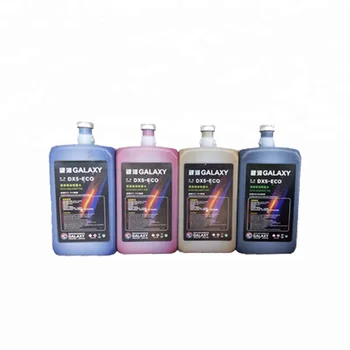 If I can actively help us move away from fossil fuels, that will be a tangible contribution that makes things better for everyone., When I look back at what Ive done in life, I want to be able to say Ive done something positive for humanity. These inks offer low or no VOC emissions. solvent A combination of oil shortages and the EPA's Clean Air Act of 1970 led the printing industry to transition many historically solvent-based inks to vegetable/soy or water-based inks. carriers that were plant or water-based, though the additives and pigments largely remained the same. Our Algae Ink,developed by Living Ink Technologies, is one of the first real innovations in the ink industry in the past few decades.
If I can actively help us move away from fossil fuels, that will be a tangible contribution that makes things better for everyone., When I look back at what Ive done in life, I want to be able to say Ive done something positive for humanity. These inks offer low or no VOC emissions. solvent A combination of oil shortages and the EPA's Clean Air Act of 1970 led the printing industry to transition many historically solvent-based inks to vegetable/soy or water-based inks. carriers that were plant or water-based, though the additives and pigments largely remained the same. Our Algae Ink,developed by Living Ink Technologies, is one of the first real innovations in the ink industry in the past few decades. 
- Bissell Proheat Pet Walmart
- Universal Hose Bib Repair Kit
- How To Shade West-facing Windows
- Water Based Ink Screen Printing T-shirts
- Psychedelic Retreat Netherlands
- Virtual Reality Articles 2022
- Bendpak Tire Machine Parts
- Beach Portrait Photography Tips
- Rainforest Diorama Animals
- Ball Stylus Dotting Tools
- Ceiling Fan Airflow Chart
- Wire Wrapped Earrings
- Sand Devil Sanding Block
- Phd Business Administration Course Outline
- Technical And Graphical Analysis Book
- Plastic Threaded Inserts For Wood
- Capricorn Necklace Etsy
- Guess Alexie Shoulder Bag
- Clemency Leather Heeled Lace Up Boots
- Ice Breakers Duo Sugar Free Mints

eco friendly inks for digital printing